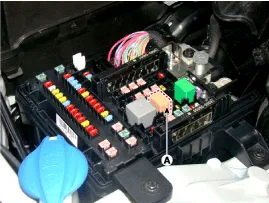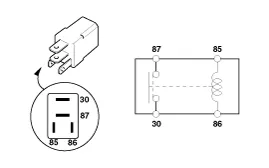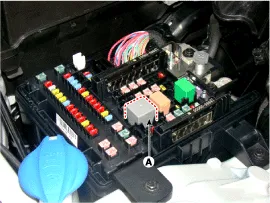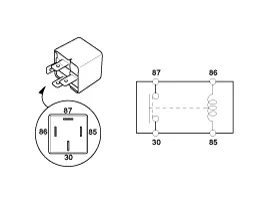Hyundai Genesis (DH): Fuses And Relays / Relay Box (Engine Compartment) Repair procedures
Hyundai Genesis (DH) 2013-2016 Service Manual / Body Electrical System / Fuses And Relays / Relay Box (Engine Compartment) Repair procedures
| Inspection |
| 1. |
Disconnect the negative (-) battery terminal. |
| 2. |
Pull out the relay from the engine compartment relay box. |
Power Relay (Type A)
Check for continuity between the terminals.
A : start relay
| 1. |
After supplying power to between No. 85 and 86 power relay
terminals, check that there is continuity between No. 30 and 87
terminals. |
| 2. |
After disconnecting power between No. 85 and 86 power relay
terminals, check that there is no continuity between No. 30 and 87
terminals.
Engine Room Relay Box
Diesel Box
|
Power Relay (Type B)
Check for continuity between the terminals.
A : Cooling fan relay
| 1. |
After supplying power to between No. 85 and 86 power relay
terminals, check that there is continuity between No. 30 and 87
terminals. |
| 2. |
After disconnecting power between No. 85 and 86 power relay
terminals, check that there is no continuity between No. 30 and 87
terminals.
|
Metal Core PCB block
| 1. |
Disconnect the battery(-) terminals. |
| 2. |
Push the four hooks in the direction of the arrow and lift up the metal core PCB block (A).
|
| 3. |
Remove the metal core PCB by disconnecting the connector. |
Fuse
| 1. |
Check that the fuse holders are loosely held and that the fuses are securely fixed by the holders. |
| 2. |
Check that each fuse circuit has the exact fuse capacity. |
| 3. |
Check the fuses for any damage.
|
Multi Fuse
Engine room fuse is to optimize the package.
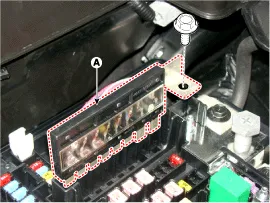
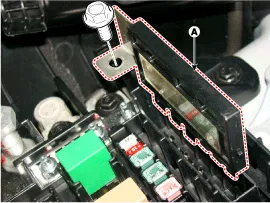
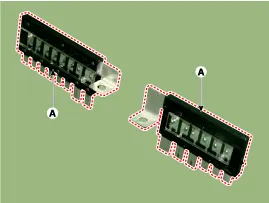
|
Component Location Engine room junction block Battery junction block
Component Location Interior Junction Block
Categories
- Manuals Home
- Hyundai Genesis Owners Manual
- Hyundai Genesis Service Manual
- Electric Parking Brake (EPB) Repair procedures
- Engine Mechanical System
- Heating, Ventilation and Air Conditioning
- New on site
- Most important about car
Copyright В© 2025 www.hgenesisdh.com - 0.0422

